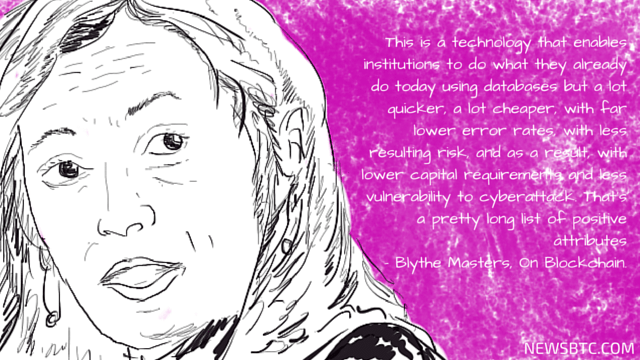Speaking in the Bloomberg Markets Most Influential Summit in New York this week, former JPMorgan exec and current Digital Asset Holdings CEO Blythe Masters gave a relatively simplified explanation on the blockchain.
“At its simplest level, a blockchain is nothing much more than a fancy kind of database,” she said. Blockchain refers to the distributed public ledger of bitcoin transactions, verified and stored in a network of computers solving complex algorithms in a process known as bitcoin mining. This technology is currently being studied by large financial institutions for its potential applications in the industry.
Possible Uses of Blockchain
“This is a technology that enables institutions to do what they already do today using databases but a lot quicker, a lot cheaper, with far lower error rates, with less resulting risk, and as a result, with lower capital requirements and less vulnerability to cyberattack,” she explained. “That’s a pretty long list of positive attributes.”
The blockchain is based on a consensus-based decision-making model in which the ledger cannot be altered unless majority of the computers in the network acknowledge that change or update. As such, an attack on one or two servers does not expose the entire system to risks since the other computers in the network are still likely to be secure.
With that, blockchain technology has the potential to take over existing database systems, which are still relatively vulnerable to hacking or various forms of cyberattacks. This distributed public ledger is already being tapped for its uses on record-keeping, tracking data transfers, intellectual property rights distribution, and trade settlement among many others.
Masters also emphasized the value of collaboration in this regard, as she said that sharing a record-keeping system among entities could enhance the system’s stability. “If you and I agree to same the same records from inception… we are eradicating that need for post-trade reconcilation and settlement process that is lengthy, time-consuming and expensive,” Masters concluded. “That, in short, is the simplest way to think of how a distributed ledger or a blockchain-type database.”
